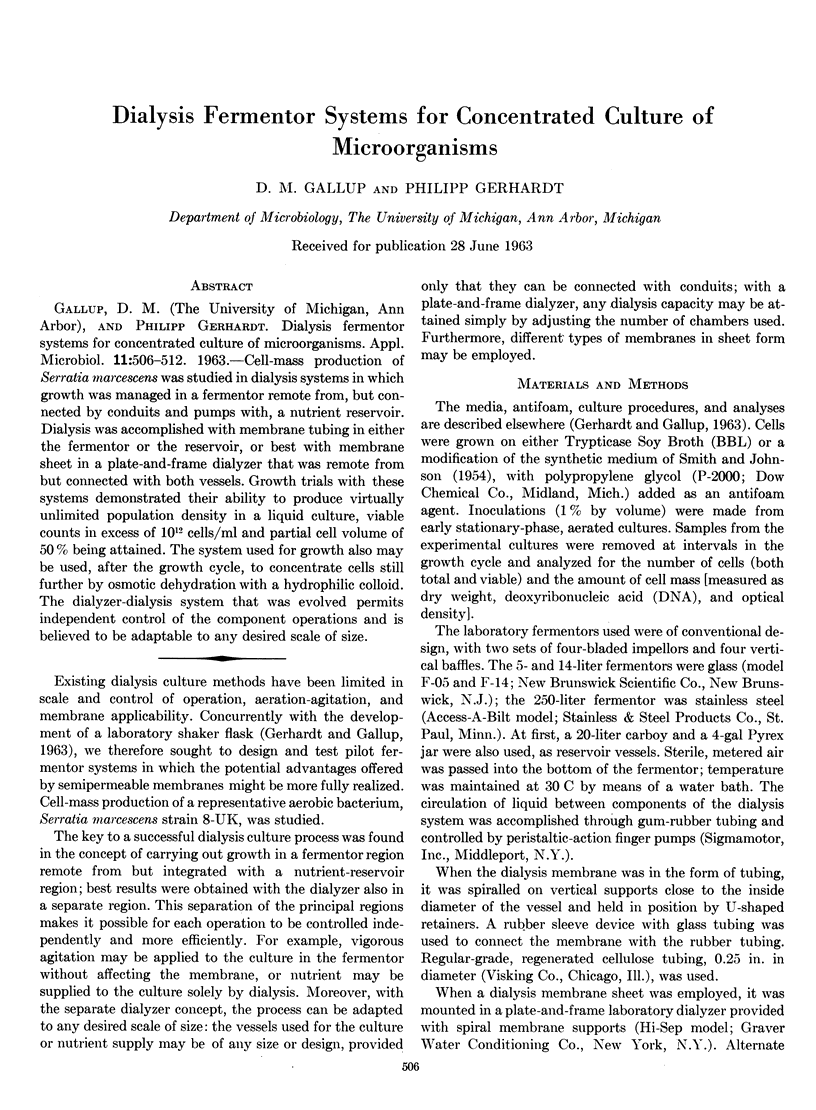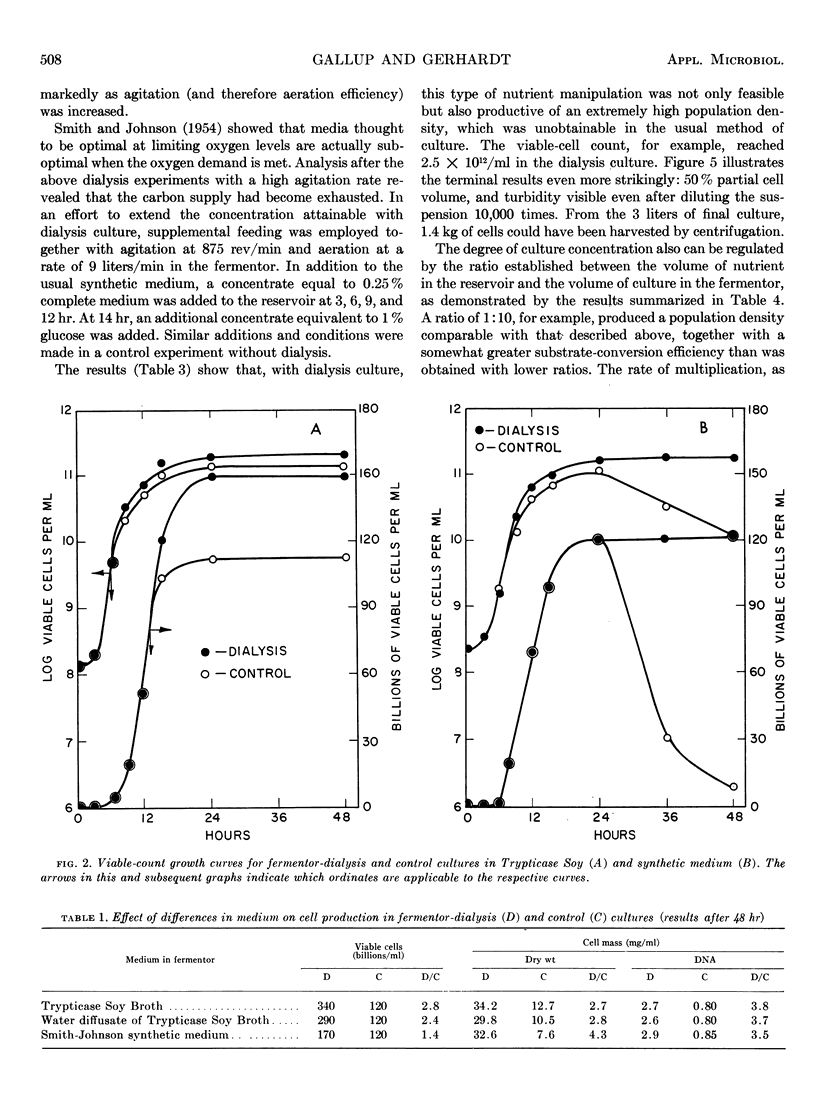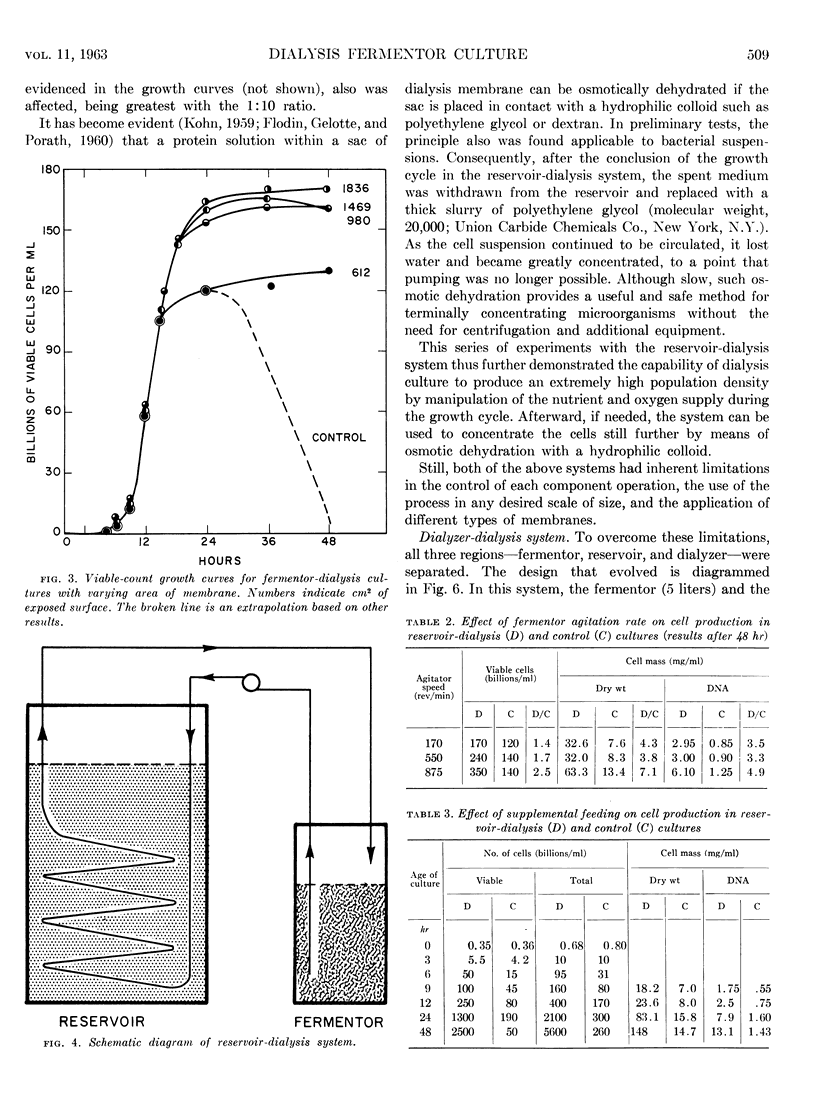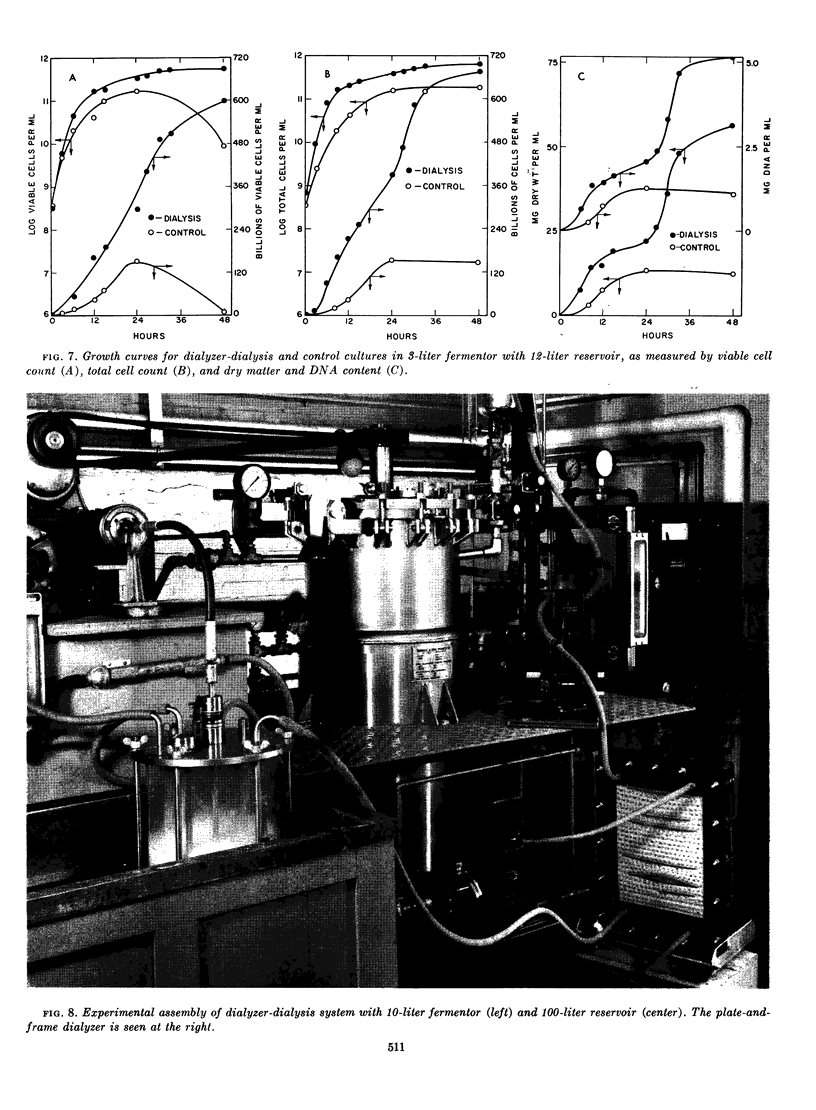Abstract
Cell-mass production of Serratia marcescens was studied in dialysis systems in which growth was managed in a fermentor remote from, but connected by conduits and pumps with, a nutrient reservoir. Dialysis was accomplished with membrane tubing in either the fermentor or the reservoir, or best with membrane sheet in a plate-and-frame dialyzer that was remote from but connected with both vessels. Growth trials with these systems demonstrated their ability to produce virtually unlimited population density in a liquid culture, viable counts in excess of 1012 cells/ml and partial cell volume of 50% being attained. The system used for growth also may be used, after the growth cycle, to concentrate cells still further by osmotic dehydration with a hydrophilic colloid. The dialyzer-dialysis system that was evolved permits independent control of the component operations and is believed to be adaptable to any desired scale of size.
Full text
PDF






Images in this article
Selected References
These references are in PubMed. This may not be the complete list of references from this article.
- FLODIN P., GELOTTE B., PORATH J. A method for concentrating solutes of high molecular weight. Nature. 1960 Nov 5;188:493–494. doi: 10.1038/188493a0. [DOI] [PubMed] [Google Scholar]
- GERHARDT P., GALLUP D. M. DIALYSIS FLASK FOR CONCENTRATED CULTURE OF MICROORGANISMS. J Bacteriol. 1963 Nov;86:919–929. doi: 10.1128/jb.86.5.919-929.1963. [DOI] [PMC free article] [PubMed] [Google Scholar]
- KOHN J. A simple method for the concentration of fluids containing protein. Nature. 1959 Apr 11;183(4667):1055–1055. doi: 10.1038/1831055a0. [DOI] [PubMed] [Google Scholar]
- SMITH C. G., JOHNSON M. J. Aeration requirements for the growth of aerobic microorganisms. J Bacteriol. 1954 Sep;68(3):346–350. doi: 10.1128/jb.68.3.346-350.1954. [DOI] [PMC free article] [PubMed] [Google Scholar]




